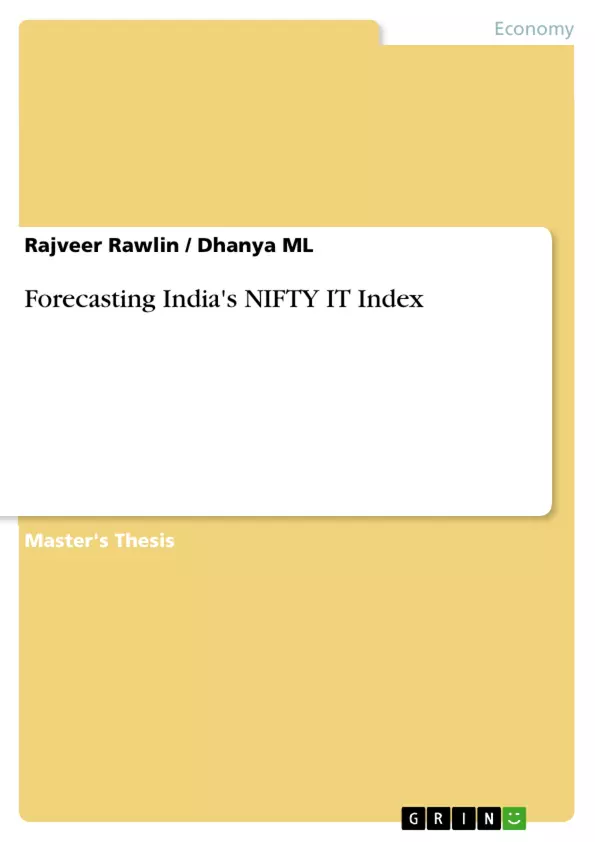The purpose of this research is to forecast the following day's closing price for a specific share of a company in the stock market using the "Hidden Markov Model". In this paper, the "Hidden Markov Model" is used to predict some of the stocks of interconnected airline markets. The researchers have developed the "Hidden Markov Model" for forecasting time series. As a result of its ability to model dynamic systems, this model is widely used for the
recognition of model and problem classifications.
In this article, the researchers examined trends in the historical data set. They inserted the appropriate neighboring prices to the datasets and predicted the next day's exchange. Data collection was secondary. The secondary market was collected from Southwest Airlines for 1.5 years (approximately) from September 17, 2002, to December 16, 2004. The observations of the input data are continuous rather than discrete. The sample size is 4 airline firms (British Airlines, Delta Airlines, Southwest Airlines, and Ryanair Holdings Ltd.)
The NIFTY IT index captures the performance of the Indian Information Technology (IT) companies. The NIFTY IT index consists of 10 companies listed on the National Stock Exchange (NSE). The IT sector in India has been recording tremendous growth over the years, where it accounts for a growth rate of 7.5 percent per annum.
Time series analysis is a statistical tool that can be used in forecasting the prices of financial assets. In the current study, the NIFTY IT index was forecasted from past data collected over a 10 year period spanning from 2011 to 2020. An ARIMA model is fit and used to forecast the NIFTY IT index. Forecasted values were different from actual prices, suggesting that more influencing independent variables must be include, to improve the model accuracy.
Inhaltsverzeichnis (Table of Contents)
- EXECUTIVE SUMMARY
- INTRODUCTION
- Introduction Information Technology Industry and NIFTY IT
- Impact of IT on the Indian Economy
- Performance of IT industry in the Past Decade
- DESIGN OF THE STUDY
- Review of Literature
- Statement of the Problem
- Objectives
- Hypothesis
- Scope of the Study
- Research Methodology
- Research Tools
- Data Collection Method
- Plan of Analysis
- Limitation of the Study
- PROFILE OF THE COMPANY
- Information Technology Industry
- Introduction
- Industry Structure of the IT Sector
- Growth of IT Sector
- Market Size of IT Industry
- Challenges in IT industry
- Government Regulations
- Future Prospects of IT Industry
- Future Trends in 2021
- India's IT Sector - Growing Opportunities for Investment
- National Stock Exchange
- NIFTY IT Index
- Porter's Five Force
- Company Profile
- Information Technology Industry
- DATA ANALYSIS
- Summary Statistics
- Normality Test
- Time Series Plot
- Dicky Fuller Test
- Correlogram
- Model 2: ARIMA
- Hypothesis Testing
- SUMMARY OF FINDINGS, CONCLUSION, SUGGESTION
- Summary of Findings
- Conclusion
- Suggestions
Zielsetzung und Themenschwerpunkte (Objectives and Key Themes)
This study aims to forecast the NIFTY IT index, a benchmark index for the Indian information technology sector, using a time series analysis approach. The research utilizes historical data to identify patterns and trends, ultimately seeking to predict future movement in the NIFTY IT index. This endeavor is significant due to the substantial impact of the IT sector on the Indian economy.
- Performance and trends within the Indian Information Technology (IT) industry.
- Factors influencing the NIFTY IT index's movement and potential forecasting approaches.
- Analysis of key company profiles within the NIFTY IT index.
- Application of time series analysis techniques to forecast the NIFTY IT index.
- Examination of the impact of government regulations and market forces on the IT sector.
Zusammenfassung der Kapitel (Chapter Summaries)
- Executive Summary: Provides a concise overview of the research objectives, methodology, key findings, and conclusions regarding the forecasting of the NIFTY IT index.
- Introduction: Introduces the information technology industry in India, focusing on its importance, growth, and the NIFTY IT index as a representative measure. Examines the past performance and impact of the IT industry on the Indian economy.
- Design of the Study: Outlines the research approach, including a literature review, statement of the problem, objectives, hypothesis, scope, methodology, and data collection methods. Explains the rationale behind the chosen research techniques and potential limitations.
- Profile of the Company: Offers an in-depth look at the information technology industry, including its structure, growth, market size, challenges, government regulations, future prospects, and key trends. Delves into the National Stock Exchange, the NIFTY IT index, and applies Porter's Five Forces framework to analyze the industry's competitive landscape.
- Data Analysis: Presents a comprehensive analysis of the data collected, employing summary statistics, normality tests, time series plots, Dickey Fuller tests, correlograms, and ARIMA models to identify patterns and trends in the NIFTY IT index data.
Schlüsselwörter (Keywords)
Key terms and concepts explored within this study include the NIFTY IT index, time series analysis, Indian information technology industry, forecasting, ARIMA models, market performance, government regulations, and industry trends.
- Quote paper
- Rajveer Rawlin (Author), Dhanya ML (Author), 2021, Forecasting India's NIFTY IT Index, Munich, GRIN Verlag, https://www.grin.com/document/1034328



